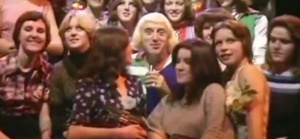Accurate research is a vital part of writing crime fiction. I am spoilt rotten in that I have a recently retired Home Office pathologist in the family. He is incredibly patient and generous about answering my questions, which means that I do try very hard not to ring him up every other sentence. However, I did ask him to read the chapter in Good Girls Don’t Die in which the police and a forensic pathologist attend a murder scene. He talked me through exactly what he would do, and was quite happy for me to omit or bend the procedure for dramatic purposes, but he had one total and absolute sticking point: there was no way the pathologist would drive a Volvo.
When my brother was at his busiest, with sometimes only two forensic pathologists covering several counties, he spent far too many hours in his car, sometimes arriving home past midnight from one job only to get another call and immediately have to drive a further hundred or more miles to another crime scene, and then home again, on his own, eating a service station sandwich and working out what would go in his report, what he’d have to think about when he started the post mortem, and what cruelty or tragedy he’d just seen.
So I rewarded my fictional pathologist with a gold Porsche Panamera.

I’ve been privileged, writing television crime drama, to have hung out with quite a few serving and retired police officers, from a former head of the Vice squad to beat officers, from detectives on a dedicated ‘burglary artifice’ squad to Jackie Malton, the DCI who inspired Prime Suspect’s Jane Tennison. I’ve been out in vans responding to 999 calls and followed officers into people’s homes; been out in the area car that would have been the first on the scene (and I mean, the first) should there be any kind of incident in Downing Street; I’ve watched proceedings in both a coroner’s court and the Old Bailey (even lunched with the judges); played the ‘criminal’ in a CID interview training exercise; and visited an identification parade suite.
And yes, I learnt an enormous amount about process and vocabulary and how things work, but the most valuable lessons lay in gleaning some understanding of what makes people in such professions tick.
Although writing fiction seems horribly trivial in comparison to the responsibilities that those who work in frontline services face every day, nearly everyone has been kind, patient and open-minded. Only once did I witness how easily one bad apple can generate untold mistrust and resentment within a south London community.
What has really helped me feel that I’m writing with some vague authenticity is not so much the accuracy of the physical details as the jokes, the attitudes to life, the food, and the everyday frustrations, like finding a parking ticket on an unmarked CID car. Frontline humour is shockingly black – far blacker than it would ever be possible to reproduce when the context is merely fictional – and so is the intense and apparently bottomless empathy for victims.
Years ago, when I was writing half-hour, stand-alone episodes of The Bill for ITV, I grabbed a story from one of the full-time police advisors on the show. A fairly hard-bitten retired sergeant who quite enjoyed making the writers’ lives difficult, Malcolm told me about a night when an old man on a Zimmer frame had been brought in. The old man had had a suicide pact with his wife, killed her but lacked the physical strength to finish the job on himself. It had been Malcolm’s role as custody sergeant to lock him up and then check on him every half hour.
The story for me was not the old man’s, poignant though it was, but that of the cynical custody sergeant who, by the end of his seemingly endless night shift, could no longer hide his emotion. For me, that story said everything about The Job, about the protective armour that officers grow and about what it takes to pierce it.
Which is why I understood why it was important for my fictional forensic pathologist to drive a flash car, for reasons both obvious (speed, comfort, safety) and more subtle – a different kind of safety, perhaps, a protective cocoon both on the way to a scene and on the way back?
Growing up as the only non-medic in a family of four hospital doctors, I’ve always been interested in what attracts people to frontline jobs, and in how the rules, values and responses to the pressures of such exceptionally intense professions gradually become an unconscious part of who they are. So, while it’s been amazing to have experts willing to explain the nuts and bolts of ballistics, DNA or the Police and Criminal Evidence Act, I’ve also realised that such details are seldom of primary interest to them. I always try to watch out for the ‘tells’ that explain what is in it for them, why they first decided to do what they do, what it takes to be the job, and how they feel about the effects of their work on their everyday lives and their families.
So when you talk to an expert, never mind the facts: find out what car they drive, or get them to tell you a joke. That’ll show you what they really do.
This piece first appeared in Red Herrings, the members’ magazine of the Crime Writers’ Association.





